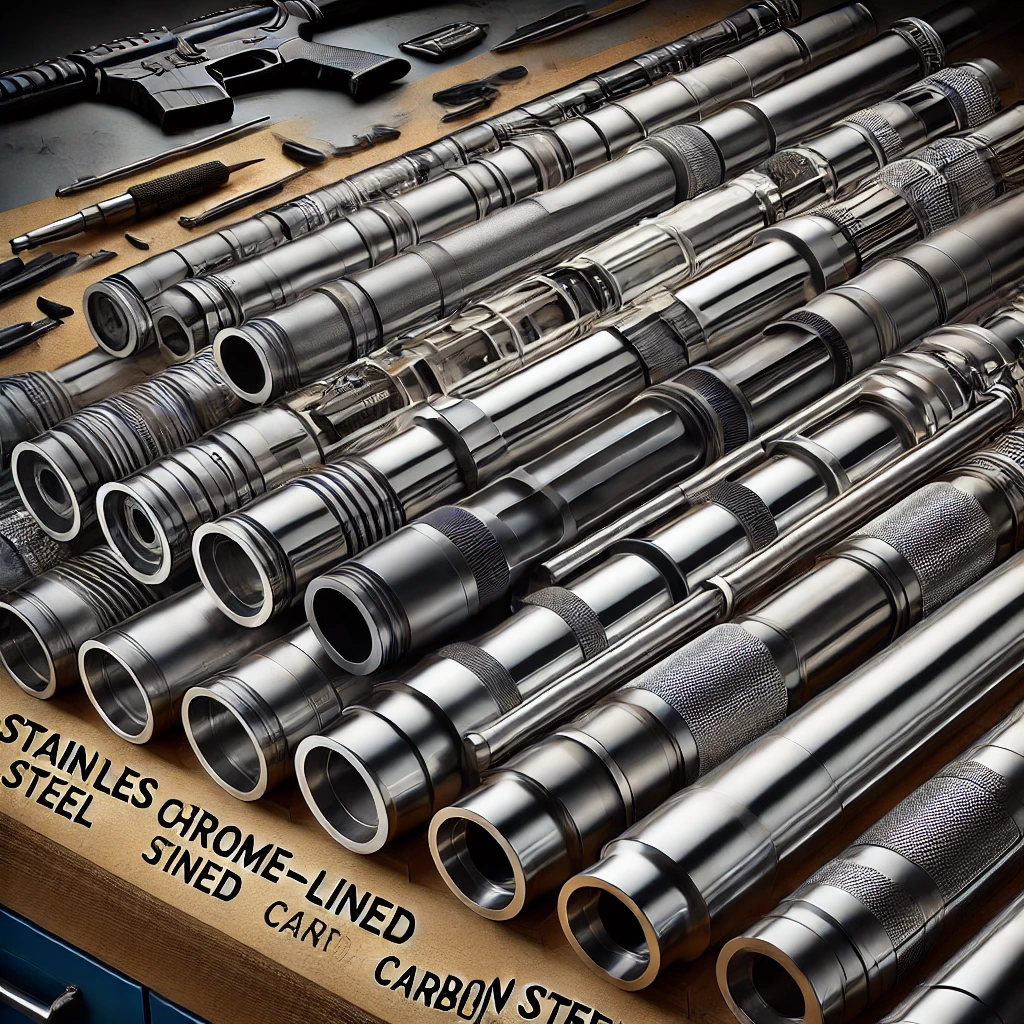The AR-15 is a versatile and widely used firearm, and its performance heavily depends on the quality of its barrel. Among the various components of an AR-15, the barrel plays a critical role in accuracy, durability, and overall functionality. One of the key factors influencing barrel performance is the material used in its construction. Let’s explore the most common AR-15 barrel materials and how they impact your firearm’s performance.
Chromoly Steel Barrels: The Standard Choice
Chromoly steel, an alloy of chromium and molybdenum, is one of the most common AR-15 barrel materials. Known for its strength and affordability, chromoly barrels offer a good balance between durability and cost. These barrels are often treated with a nitride or chrome lining, which enhances their corrosion resistance and longevity.
While untreated chromoly barrels may be prone to rust, modern coatings have largely mitigated this issue. Shooters looking for an all-purpose barrel often turn to chromoly steel for its versatility and reliability.
Stainless Steel Barrel materials: Precision and Accuracy
Stainless steel barrels are a top choice for shooters prioritizing accuracy. These barrels are highly resistant to corrosion and are commonly used in precision rifles. The material’s properties allow for tighter machining tolerances, which enhances consistency and accuracy.
However, stainless steel barrels tend to wear out faster under rapid-fire conditions. If you’re a competitive shooter or enjoy long-range shooting, stainless steel is an excellent option, but it may not be ideal for high-volume shooting sessions.
Carbon Fiber-Wrapped Barrels: Lightweight Innovation
For those seeking a lightweight alternative, carbon fiber-wrapped barrels are a game-changer. These barrels consist of a thin steel core surrounded by carbon fiber. The result is a durable yet lightweight barrel that dissipates heat more efficiently than traditional options.
Carbon fiber barrels are particularly beneficial for hunters and shooters who prioritize mobility without sacrificing accuracy. While they come with a higher price tag, their innovative design and performance often justify the investment.
Cold Hammer Forged Barrel materials: Built to Last
Cold hammer forging (CHF) is a manufacturing process that enhances a barrel’s durability and longevity. Barrels made using this method, often from chromoly steel, are highly resistant to wear and heat. The process aligns the grain structure of the steel, making the barrel stronger and more consistent.
CHF barrels are a go-to option for military and law enforcement applications due to their ability to withstand rigorous use. For civilian shooters, they offer excellent durability, especially for those planning to put their AR-15 through high-round counts.
Key Factors to Consider When Choosing a Barrel Materials
Selecting the right barrel material depends on your intended use, shooting style, and budget. Precision shooters may prefer stainless steel, while those prioritizing longevity might opt for a cold hammer forged chromoly barrel. Hunters and competition shooters who value a lightweight build may find carbon fiber barrels ideal despite their higher cost.
Other considerations include barrel length, twist rate, and finish. These factors, combined with the material, will influence your AR-15’s performance, reliability, and maintenance requirements.
Conclusion
AR-15 barrel materials significantly impact its performance and longevity. Understanding the strengths and weaknesses of each material can help you make an informed decision based on your specific needs. Whether you’re building a precision rifle, a high-volume plinker, or a lightweight hunting rig, the right barrel material can make all the difference. Invest in a quality barrel, and you’ll set the foundation for a reliable and high-performing AR-15.


